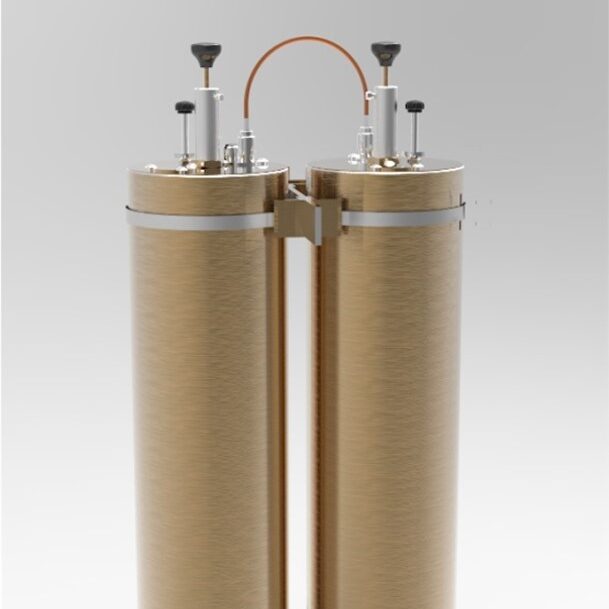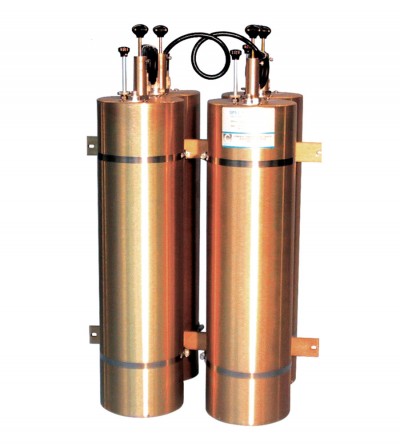- Temperature Compensation
- Ensures Frequency Stability
- High Attenuation
- Minimizes desense and interference from adjacent systems
DESIGNED FOR MAXIMUM PERFORMANCE AND EFFICIENCY
Our filters have been selected by some of the leading Public Safety organizations across North America to ensure Mission-Critical performance for their RF networks. Comprod manufactures each cavity filter in North America – skilled RF technicians, quality calibration, and insistence on high-quality plating materials. This ensures that the filter performance will be optimal, tuning can be easily performed by your technicians, and the RF signals remain as pure and clean as possible. Our customers notice the difference in quality and reliability.
• Four versions of filters available: Band-Pass, Notch, Pass-Reject, and X-Pass, available in 2″, 4″, 6.625″ and 10″ cavities
• 6.625” and 10” filters have two hand-movable tuning rods for faster tuning. Silver-plated adjustable coupling loops and a calibration index label help to facilitate setting the cavity insertion loss as required for each application.
• Combination of a heavy-gauge aluminum outer conductor, thick heliarc-welded cavity top plates, heavy silver-plating on micro-finished tuning assemblies, and Invar-based temperature compensation material for constant performance levels and long-term reliability
• Silver-plated brass bodies, gold- plated center contacts and thru-line cable assemblies that are made with high-quality connectors and RG-393B/U Teflon or RG-214/U cable to provide excellent intermodulation rejection at high system power levels
• Gold-plated cable connector center contacts are soldered to the cable and the dual shield is securely crimped to the connector barrel using pneumatic fixtures and precision dies
-
 Our 2" base station duplexers are ideal for compact high isolation installations. These filters are designed for the combination of two frequencies that require extra isolation, or they can be used as efficient preselectors. Selectivity can be determined by the field adjustable capacitors. Each cavity is temperature compensated for operation between -40ºC to +60 ºC. Each cavity has a gold Alodine finish, silver-plated loops, and silver-plated tuning rods.
Our 2" base station duplexers are ideal for compact high isolation installations. These filters are designed for the combination of two frequencies that require extra isolation, or they can be used as efficient preselectors. Selectivity can be determined by the field adjustable capacitors. Each cavity is temperature compensated for operation between -40ºC to +60 ºC. Each cavity has a gold Alodine finish, silver-plated loops, and silver-plated tuning rods. -

 Designed to reject one narrow band of frequencies, while letting all others pass in the operating band
Designed to reject one narrow band of frequencies, while letting all others pass in the operating band- Can be cascaded or added to one another in order to sharpen the attenuation of the rejection curve
- Temperature compensated to ensure frequency stability
- High attenuation to minimize desense and interference from adjacent systems
- Adjustable loops: each cavity has a calibration index
-

 Designed to minimize interference from adjacent channels and outside systems
Designed to minimize interference from adjacent channels and outside systems- Available in single, dual or triple units
- Temperature compensated to ensure frequency stability
- High attenuation
- Adjustable loops: each cavity has a calibration index to reference insertion loss
-

 Designed for minimizing interference from adjacent channels and outside systems
Designed for minimizing interference from adjacent channels and outside systems- Available in single, dual, triple or additional units
- Temperature compensated to ensure frequency stability
- High attenuation to minimize desense and interference from adjacent systems
- Adjustable loops: each cavity has a calibration index for easy field tuning
-

 Top-Tower Amplifier Our modular Tower-Top Amplifier (TTA) systems provide superior receiver system performance and excellent electrical reliability by improving base station Up Link (UL) sensitivity. TTA systems overcome link budget imbalance between the Up Link and Down Link (DL) by boosting received signal to overcome received path loss (feeder losses).
Top-Tower Amplifier Our modular Tower-Top Amplifier (TTA) systems provide superior receiver system performance and excellent electrical reliability by improving base station Up Link (UL) sensitivity. TTA systems overcome link budget imbalance between the Up Link and Down Link (DL) by boosting received signal to overcome received path loss (feeder losses).- Improved base station UL sensitivity
- Redundant LNA with automatic change over
- LNA bypass modes
- Monitoring & Control via GUI
- SNMP Alarms
- Remote Access
-




 Our Control Station Combiners (CSC) is an ideal solution to reduce the number of antennas required on a communications site by maintaining a high radio-to-radio isolation at all times. It can significantly reduce tower clutter and loading, and simplify cabling installation at control center facilities. This product provides frequency-agile operation across a frequency range from 380 up to 512 MHz. This combiner has the possibilities to be connected to two antennas TX and RX. In case of only one antenna is used for TX and RX, an external duplexer is required. DOWNLOAD PDF
Our Control Station Combiners (CSC) is an ideal solution to reduce the number of antennas required on a communications site by maintaining a high radio-to-radio isolation at all times. It can significantly reduce tower clutter and loading, and simplify cabling installation at control center facilities. This product provides frequency-agile operation across a frequency range from 380 up to 512 MHz. This combiner has the possibilities to be connected to two antennas TX and RX. In case of only one antenna is used for TX and RX, an external duplexer is required. DOWNLOAD PDF -

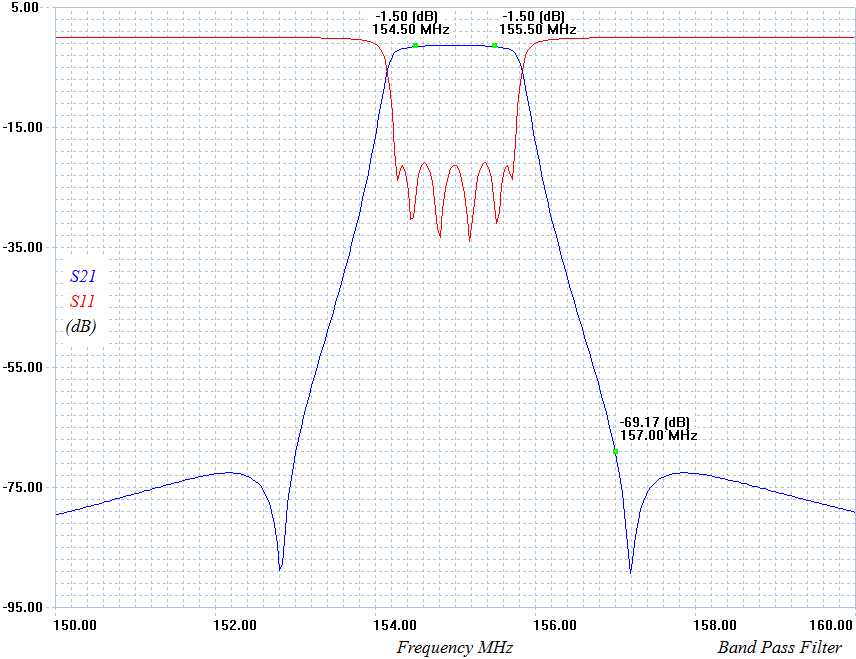

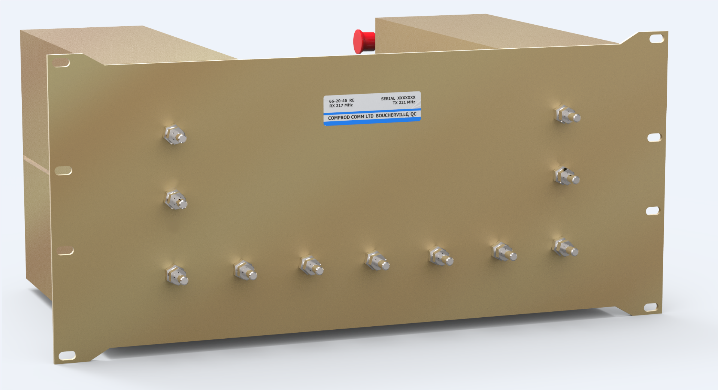 Our Bandpass preselector filters are designed to improve selectivity in a compact package. They represent an optimized solution for receiver and transmitter. This construction with solid welded cavities, gold Alodine finish, silver-plated loops, and silver-plated tuning rods offers a minimum insertion loss and good stability in temperature. These filters are the ideal solution to be used in crowded RF environment site where the noise is an important factor. DOWNLOAD PDF
Our Bandpass preselector filters are designed to improve selectivity in a compact package. They represent an optimized solution for receiver and transmitter. This construction with solid welded cavities, gold Alodine finish, silver-plated loops, and silver-plated tuning rods offers a minimum insertion loss and good stability in temperature. These filters are the ideal solution to be used in crowded RF environment site where the noise is an important factor. DOWNLOAD PDF -



 Our Bandpass preselector filters are designed to improve selectivity in a compact package. They represent an optimized solution for receiver and transmitter. This construction with solid welded cavities, gold Alodine finish, silver-plated loops, and silver-plated tuning rods offers a minimum insertion loss and good stability in temperature. These filters are the ideal solution to be used in crowded RF environment site where the noise is an important factor. DOWNLOAD PDF
Our Bandpass preselector filters are designed to improve selectivity in a compact package. They represent an optimized solution for receiver and transmitter. This construction with solid welded cavities, gold Alodine finish, silver-plated loops, and silver-plated tuning rods offers a minimum insertion loss and good stability in temperature. These filters are the ideal solution to be used in crowded RF environment site where the noise is an important factor. DOWNLOAD PDF -



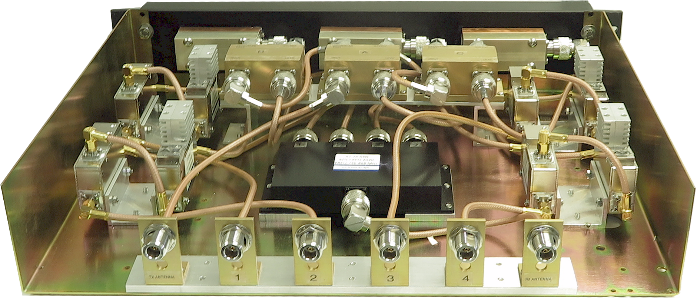



 Our Control Station Combiners (CSC) is an ideal solution to reduce the number of antennas required on a communications site by maintaining a high radio-to-radio isolation at all times. It can significantly reduce tower clutter and loading, and simplify cabling installation at control center facilities. This product provides frequency-agile operation across a frequency range from 136 up to 174 MHz. This combiner has the possibilities to be connected to two antennas TX and RX. In case of only one antenna is used for TX and RX, an external duplexer is required. DOWNLOAD PDF
Our Control Station Combiners (CSC) is an ideal solution to reduce the number of antennas required on a communications site by maintaining a high radio-to-radio isolation at all times. It can significantly reduce tower clutter and loading, and simplify cabling installation at control center facilities. This product provides frequency-agile operation across a frequency range from 136 up to 174 MHz. This combiner has the possibilities to be connected to two antennas TX and RX. In case of only one antenna is used for TX and RX, an external duplexer is required. DOWNLOAD PDF -







 Our Control Station Combiners (CSC) is an ideal solution to reduce the number of antennas required on a communications site by maintaining a high radio-to-radio isolation at all times. It can significantly reduce tower clutter and loading, and simplify cabling installation at control center facilities. This product provides frequency-agile operation across a frequency range from 746 up to 869 MHz covering the public safety bands 700 and 800. This combiner has the possibilities to be connected to two antennas TX and RX. In case of only one antenna is used for TX and RX, an external duplexer is required. This unit is also available in 8, 12, 16 and 32 ports configuration. DOWNLOAD PDF
Our Control Station Combiners (CSC) is an ideal solution to reduce the number of antennas required on a communications site by maintaining a high radio-to-radio isolation at all times. It can significantly reduce tower clutter and loading, and simplify cabling installation at control center facilities. This product provides frequency-agile operation across a frequency range from 746 up to 869 MHz covering the public safety bands 700 and 800. This combiner has the possibilities to be connected to two antennas TX and RX. In case of only one antenna is used for TX and RX, an external duplexer is required. This unit is also available in 8, 12, 16 and 32 ports configuration. DOWNLOAD PDF -

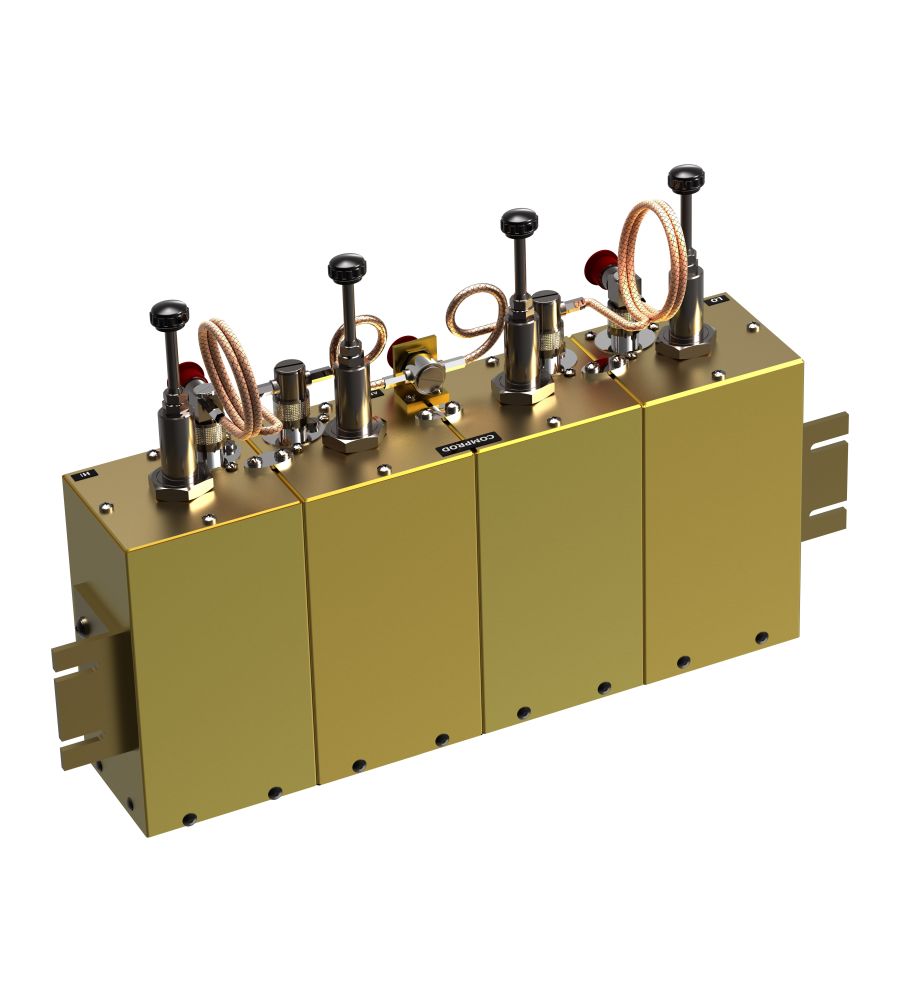 Ideal for high power, close frequency separation installations
Ideal for high power, close frequency separation installations- Designed for combining two frequencies that require extra isolation. Can also be used as efficient pre-selectors
- Temperature compensated to ensure frequency stability
- High attenuation to minimize desense and interference from adjacent systems
- Adjustable loops
-

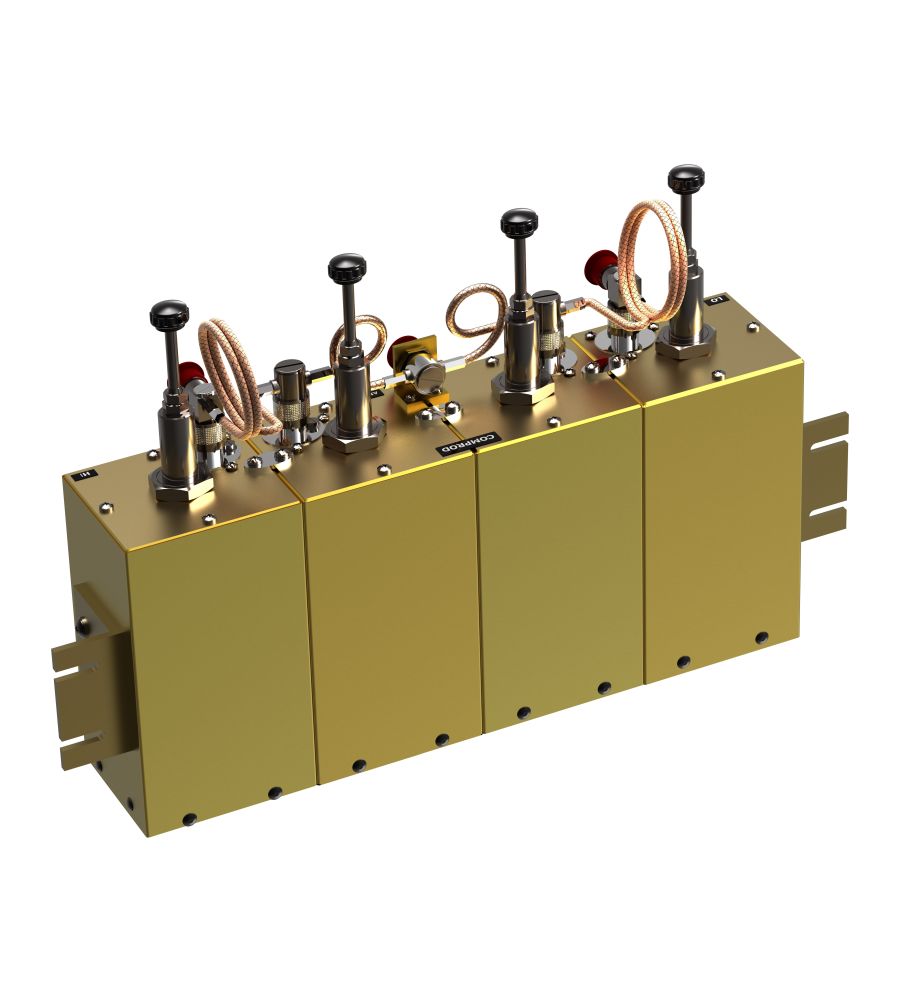 Ideal for high power, close frequency separation installations
Ideal for high power, close frequency separation installations- Designed for combining two frequencies that require extra isolation. Can also be used as efficient pre-selectors
- Temperature compensated to ensure frequency stability
- High attenuation to minimize desense and interference from adjacent systems
- Adjustable loops





